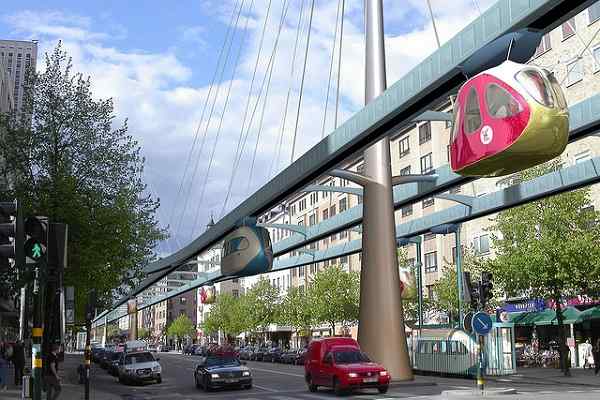Sion, Switzerland (Urban Transport News): Sion, the picturesque Swiss city, is gearing up for a revolutionary change in its transportation landscape with the introduction of an urban cable car system set to connect the districts of Bramois and Nax by 2028. This innovative project, aimed at enhancing the lives of residents, commuters, and tourists, brings forth a host of details regarding its concept, financing, and the anticipated timeline.
A Vision for Swift Connectivity
The driving force behind this ambitious project is to facilitate efficient public transportation on the right bank of the Borgne. A collaborative effort by the canton of Valais, along with the municipalities of Sion and Mont-Noble, has given rise to a cable car initiative poised to redefine the commuting experience.
Key Project Details
According to the city of Sion’s press release, the spatial planning for the cable car line is set to commence in 2024. Acknowledged by Bern as a public transportation link and proposed within the federal development program PRODES, this cable car project aims to significantly improve travel times between Bramois and Nax.
The cable car, boasting a capacity of 50 seats, is projected to operate throughout the day and into the late night, providing a compelling alternative to the current ten to eleven bus trips per day.
Competitive Advantage Over Cars
The proposed cable car connection promises a swift seven-minute journey between Bramois and Nax, making it a highly competitive alternative to cars. The valley station, strategically connected to Sion city buses and the regional train line, ensures seamless integration with existing transportation networks.
Philippe Varone and Bernard Bruttin, the presidents of Sion and Mont-Noble, emphasized the environmental benefits of the cable car. “Passengers can reach Nax from the Sion train station in 22 minutes, compared to 25 minutes by car and 46 minutes by bus. Additionally, the cable car will lead to a significant reduction in CO2 emissions – we anticipate a savings of 96 tons of CO2 per year.”
Architectural Innovation for Integration
The architectural concept for the cable car stations has been carefully crafted by engineering and architecture firms, including Charpente Concept, Taara Architecture, and Artefact Architecture. Emphasizing the use of wood as a local, identity-establishing, and sustainable resource, the stations aim for optimal integration into the surroundings.
Designed with a minimal footprint, featuring a lightweight wooden structure, the stations will be equipped with transparent enclosures and solar panels, allowing natural light to illuminate the spaces within while contributing to sustainable energy practices.
Recognition and Financing
The Federal Office of Transport has already recognized the cable car as a regional passenger transport system (TRV), meeting the criteria set by the Confederation in the regulation on passenger transport. The financing structure involves contributions from the Confederation, the canton of Valais, and the municipalities, ensuring a balanced and sustainable financial model.
Roadmap to Reality
The project is currently in the coordination phase at the cantonal master plan level, with procedures for amending zoning plans and alignment plans set for the upcoming year. Subsequently, an operating company will be established to apply for concession and approval of plans from the Federal Office of Transport. If all goes according to plan, Sion’s urban cable car could become operational by the year 2028.
Sion Soars to New Heights
Sion’s endeavor to introduce an urban cable car system marks a significant leap forward in redefining public transportation. With a vision for sustainable and efficient connectivity, the project encapsulates innovation, environmental consciousness, and seamless integration into the city’s fabric. As Sion aims to elevate its transportation infrastructure, the urban cable car project stands as a beacon of progress.
